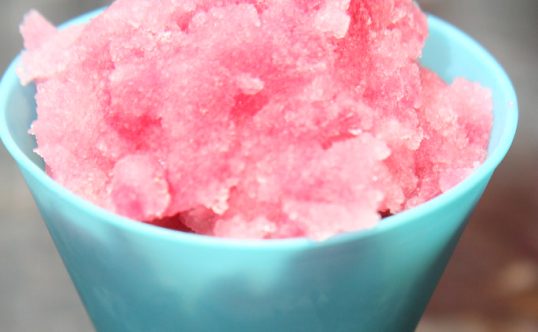Shave Ice Or Snow Cone?

Once summer hits, everyone basking in the heat of sunny beach days and outdoor barbecues will long for a cool, refreshing treat. Choice are many including popsicles, ice cream, frozen yogurt and the ever-popular combination of ice and sticky-sweet syrup.
But is it shave ice or is it a snow cone? Is there a difference? Does it matter?
And what’s with all the different names?
This popular icy treat has been called shaved ice (with a “d”), a sno cone, a snowball, and many other iterations, so it makes sense that there is some confusion on the topic.
The short answer to what separates shave ice from a snow cone is texture. The two are closely related, but if you’ve ever accidentally called shave ice a snow cone in front of someone who is partial to shave ice, you know there are strong opinions out there that say shave ice is the superior option.
In both cases, the frozen, ice substance must be prepared with a certain consistency to hold and absorb the flavored syrup for as long as possible. It it isn’t, the syrup will gather at the bottom of the cup or cone like a soda with ice cubes floating in it.
The ice in snow cones consists of a crunchy, coarse ice. It is generally made from ice cubes ground into tiny, jagged chunks or pellets. A Texas man named Samuel Bert and known by many as “King Sammie” began selling snow cones at the Texas state fair in 1919. The following year, he patented his ice crusher machine, and by the early 1950s his stand at the state fair was selling an estimated 1 million snow cones per year.
The ice in a snow cone is dome-shaped and balanced in a paper cone– hence the name snow cone. Syrup is poured over top and as the ice melts and loses its shape, the fruity liquid collects in the bottom of the cone.
Shave ice on the other hand, is naturally flaky and dusty and closely mimics the consistency of real snow. The super-fine, fluffy substance is created with either a cubed ice shaver or a block ice shaver. The automated practice of today relates back to when the Japanese migrated to the Hawaiian islands to work on the plantation fields. On their breaks, the workers would use their machetes to shave flakes into cups and pour fresh fruit juices over top.
These days, shave ice is usually served in a plastic flower cup, sometimes with a scoop of vanilla ice cream or azuki bean paste on top.
You typically find snow cones at carnivals, ballparks, school events and concession stands. The ice is crushed in advance and your choice of flavor may be limited to 2-5 syrups. Prices vary depending on location and vendor, but a standard 6 oz. snow cone ranges between $1-$3.
Shave ice is sold at roadside stands, mobile carts and trailers at carnivals and festivals. The ice is shaved upon order and customers can choose from an extensive variety of flavors. Served in foam, paper or flower cups, shave ice is typically priced higher than snow cones at $2- $6.
